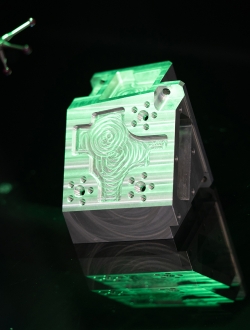
DPI® brings many advantages compared to classical freeform machining techniques like amongst others: lower surface form error, reduced machining times, increased geometrical freedom, true 100% fill factor (with extremely sharp edges between intersecting lenses), lower surface roughness, etc, which makes DPI® a unique solution for your next lens array application.
Masters have been successfully manufactured for a broad range of customers’ applications like: polymer-on-glass replication for automotive illumination, lens arrays for augmented- and virtual reality, consumer goods sensors and imaging devices, medical applications, etc.
DPI® provides the same ultra-precise quality for all lenses in a fully populated master, simplifying your replication processes and improving their productivity.
| Diamond on-axis turning | |
| Shapes | Aspheres, mild freeforms, each lens can have a different optical definition |
| Feature size | > 10 µm |
| Lens sag | > 10 µm, < 10 mm |
|
Form irregularity |
100 nm p-V |
| Ra roughness | 2 nm |
| Edge slopes | 80°, limited by tool clearance |
| 100% Fill factor | Yes |
| Position accuracy | Lens to lens: < 1 µm MLA to MLA: < 1 µm |
| Diffractive structure | Yes (axis symmetric) |
| Master size | Up to 8" |
| Number of lenses | Up to tens of thousands |
| Master material | NiP, brass, PMMA, CuBe, ... |








